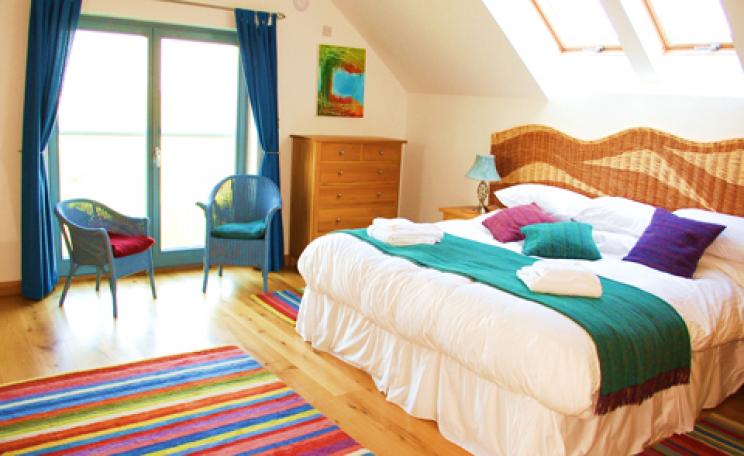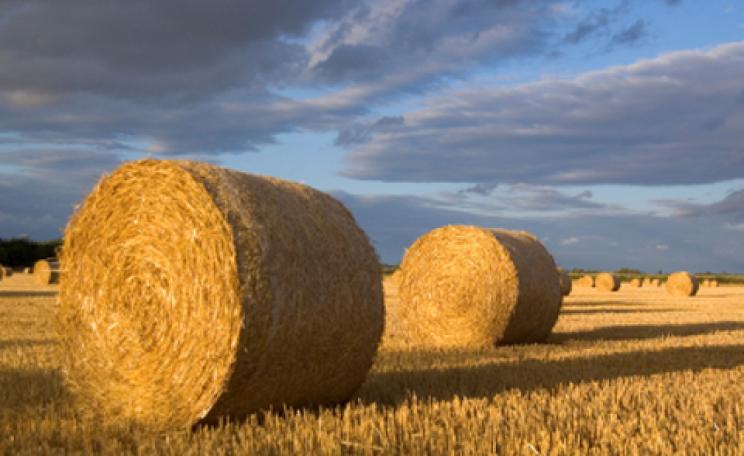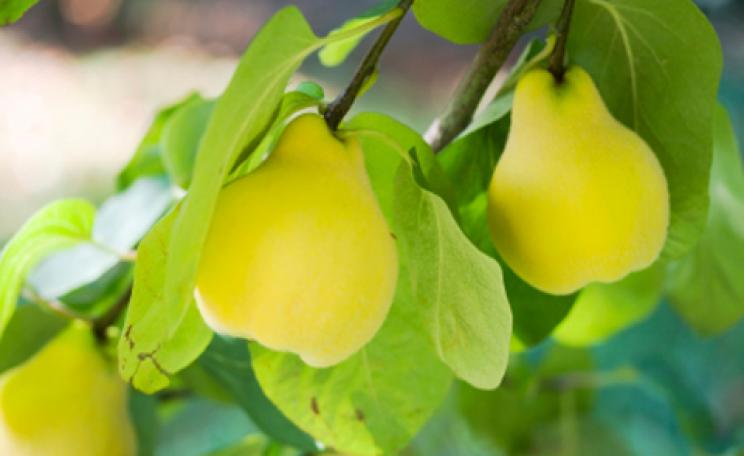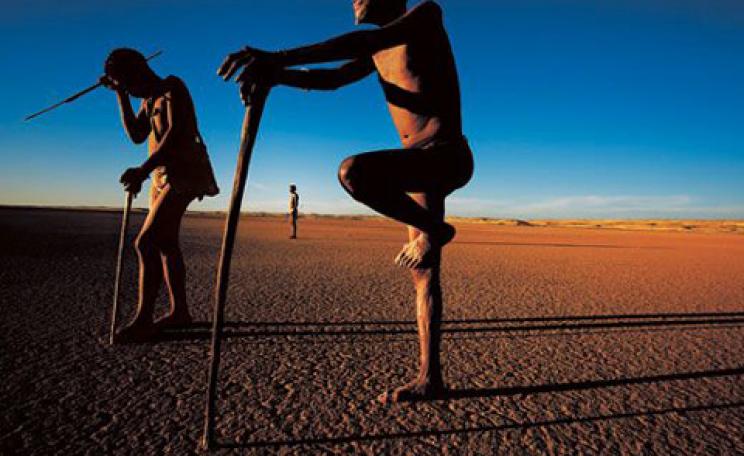Think of the United States and environmentalism probably isn’t the first thing that springs to mind. Thanks to its climate change deniers, reliance on fossil fuels and failure to sign up to Kyoto – or indeed, any sort of green treaty – it’s no surprise that the world’s most powerful country is seen as a bit of a slouch in the eco stakes. But to write the country off as a flat earther’s paradise wouldn’t just be wrong – it would be unfair to boot. With California and New York leading the charge, the USA has plenty for environmentalists the world over to admire. And nowhere is the eco trend more apparent than in Arizona.
One of the most ecologically diverse places on Earth, the cowboy state boasts no fewer than seven different types of habitat, ranging from sun-scorched desert in the south to snowy mountains in the north. Of its 113,998 square miles, only 15 per cent is privately owned, with the rest made up of a combination of national park, publicly owned forest and parkland, and Native American reservations. It’s got extinct volcanoes, huge ponderosa pine forests and most spectacularly of all, the Grand Canyon. With so much natural bounty to protect, it’s small wonder that green tourism is playing an increasingly important part in the state’s economy. And unlike Arizona’s other major source of cash – copper mining – it benefits the planet in more ways than one.
Seeing the Grand Canyon for the first time is something you’ll never forget. It doesn’t matter how many pictures you’ve seen or books you’ve read; its sheer size – if nothing else – will blow you away. Formed almost a billion years ago, its red-gold rocks and mighty ravines are home to some of the rarest species of flora in the world – and some of its cheekiest fauna in the shape of the tubby ground squirrels that haunt the trails and picnic sites along the top.  It’s a place of almost unearthly beauty but until recently, could only be reached by car or plane. That there’s an alternative is largely thanks to the efforts of one man: Max Biegert. The Grand Canyon has had its own railway line since 1901 but by the 1980s, the route had fallen into disuse. When the Biegerts arrived in 1989, the Grand Canyon Railway’s old-fashioned steam trains were rusting in the depot, while Williams – once the gateway to the Grand Canyon – had been sidelined. Thanks to the Biegerts, and more recently, eco-tourism operator, Xanterra, the train is back and this time comes with a green twist: it’s powered by used cooking oil.
It’s a place of almost unearthly beauty but until recently, could only be reached by car or plane. That there’s an alternative is largely thanks to the efforts of one man: Max Biegert. The Grand Canyon has had its own railway line since 1901 but by the 1980s, the route had fallen into disuse. When the Biegerts arrived in 1989, the Grand Canyon Railway’s old-fashioned steam trains were rusting in the depot, while Williams – once the gateway to the Grand Canyon – had been sidelined. Thanks to the Biegerts, and more recently, eco-tourism operator, Xanterra, the train is back and this time comes with a green twist: it’s powered by used cooking oil.
‘It’s definitely the greenest way to get to the Canyon,’ enthuses the railway’s director of sustainability, Morgan O’Connor. ‘There was a study done by Northern Arizona University that showed it was by far the most environmentally friendly way to go there. Because of it, 125,000 people a year aren’t driving their car.’ And getting to the Grand Canyon by train is more than just a green option: it’s also a highly entertaining one featuring a slapstick ‘train robbery’ and the chance to get a closer look at the wonderful surrounding countryside. The scenery changes constantly, with the snow capped San Francisco Peaks giving way to the carmine Red Beaut escarpment then a forest of petrified pine trees before you reach the Canyon itself. You get a brief glimpse of it as the train pulls into the charmingly old fashioned timber Grand Canyon station, before a short walk takes you to the rim of the Canyon where you’ll find one of the most magnificent views on the planet. ‘There’s still a lot more to be done in terms of sustainable tourism,’ qualifies Morgan. ‘But it’s at the heart of our [Xanterra’s] core mission.’
Down in the southern part of the state, close to the Saguaro National Park, is the White Stallion Ranch, an old fashioned dude ranch and cattle farm with a distinctly modern approach to sustainability. Reached via a long dusty track flanked by enormous cacti and even bigger rocky outcrops, it looks like the set of a John Wayne movie – albeit one with enormous solar panels outside.  One of the most charming things about Arizona is the constant sense of deja-vu – even if you haven’t been before, you’ll feel as if you have, so familiar are its southern desert landscapes to fans of Western films. At White Stallion, you’re in real cowboy country, complete with chap-sporting wranglers, line dancing in the evening and ancient saguaro cactuses. Around the ranch is rocky tundra dominated by scrub and cactus, which nevertheless, manages to support an astonishingly large array of fauna, including coyotes, mountain lions and roadrunners. As far as the ranch and its visitors are concerned, the only way to explore is via an old West type of transport: horse power.
One of the most charming things about Arizona is the constant sense of deja-vu – even if you haven’t been before, you’ll feel as if you have, so familiar are its southern desert landscapes to fans of Western films. At White Stallion, you’re in real cowboy country, complete with chap-sporting wranglers, line dancing in the evening and ancient saguaro cactuses. Around the ranch is rocky tundra dominated by scrub and cactus, which nevertheless, manages to support an astonishingly large array of fauna, including coyotes, mountain lions and roadrunners. As far as the ranch and its visitors are concerned, the only way to explore is via an old West type of transport: horse power.
Home to 150 horses as well as a large, free-roaming herd of cows, White Stallion lets you indulge any latent cowboy fantasies as well as get to grips with nature without harming it. My horse, a grey Arab named Riata, had been a pet before coming to White Stallion, although others had rather more interesting histories. One, the aptly named Amigo, had been confiscated from Mexican drug smugglers, while another, the ancient 23-year-old Packer, had been a working animal all his life. Out on the trails spiralling out from the ranch, the silence was intense with only hoof beats and squeaking leather breaking it. Although less than 10 miles from Tucson, it’s real American wilderness, little changed since the first pioneers arrived and all the more valuable for it. Here, worries about the state of the planet were easily laid to rest. Up north in Flagstaff, however, it was a different story.
A picturesque little outpost on Route 66, Flagstaff is unique for having a town centre dating from the days of the old West, and for being home to the largest ponderosa pine forest on Earth. Flanked by the snow-capped San Francisco Peaks, its surroundings bear little resemblance to the dusty plains around Tucson but are just as biodiverse. Here, green travellers will find plenty to love, not least the lovely old-fashioned Starlight Pines B&B, which offers a masterclass in upcycled interiors and one of the best breakfasts in Arizona. But there’s a more serious side to the environment to be found, and at Flagstaff Arboretum, preserving it is at the top of the agenda. Interim director, Lynne Nemeth, the woman charged with overseeing a wide array of conservation initiatives, was worried. ‘Because of climate change, by 2090, all this could be gone,’ she said, waving her hands gloomily at the surrounding pine trees.
At the Arboretum, work focuses on a combination of education and conservation, with visitors encouraged to think more carefully about water use and to take a responsible approach to enjoying the forest. ‘Climate change is caused by humans and in general, human activity is the biggest threat to places like this,’ adds Nemeth. ‘We encourage people not to overuse the forest and to stick to “leave no trace” activities.’ The two huge greenhouses onsite are used for cultivating rare endemic species with the aim of eventually returning them to the wild, not least to one of the nearby mountains where a devastating fire destroyed much of its biodiversity. The resulting restoration programme is unique, and as Nemeth admits, it’s been tough going.  ‘Part of the work we’re doing is working out how to revegetate an area like this,’ she explains. ‘Our findings can be applied wherever this type of fire dependent eco-system exists but it will take years to fix.’
‘Part of the work we’re doing is working out how to revegetate an area like this,’ she explains. ‘Our findings can be applied wherever this type of fire dependent eco-system exists but it will take years to fix.’
But it’s not all doom and gloom in the northern part of the state. Along with success stories such as the Grand Canyon Railway and the pioneering work being done at the Flagstaff Arboretum, there’s the successful conservation initiative that is Monument Valley. Part of the land belonging to the Navajo Nation, it, like Australia’s Uhuru, combines the sacred with some utterly magnificent scenery. Largely untouched by the outside world until the 1930s, nothing prepares you for the first sight of Monument Valley’s rocky red Mesas. On the dusty red road in, you pass a Mormon church and acres of flat rose-coloured sand before suddenly, asperous red slabs of rock rear up, some stacked like a colossal game of Jenga. Others resemble people, animals or more specifically, mittens. As you wend your way through the park, it quickly becomes clear that the Valley is still home for many of the Navajo, with small wooden lodges nestling at the base of some of the rocks. As our guide, Howard, pointed out, here, life goes on much as it always has – albeit with a few extra people to show around.
Need to know: America As You Like It offer a five night trip to Arizona from £1,320 per person. The price includes transport, two nights at White Stallion Ranch, one night at the Grand Canyon Railway Hotel (Williams), one night at the Starlight Pines B&B (Flagstaff) and one night at Goulding’s Lodge (Monument Valley). Price based on two people sharing and a late June departure. www.americaasyoulikeit.com
For further information on Arizona call 0207 367 0938 or visit www.arizonaguide.com
Photos: © Daniel Foss/Grand Canyon Railway
| READ MORE... | |
 |
GREEN LIVING San vs wild: what the San people can teach us about living with climate change Once derided as backwards, the southern African San tribe’s love of nature is now bringing them real rewards, as well as offering an insight into how humans can survive with little or no water. Ruth Styles travelled to meet them in Namibia |
 |
GREEN LIVING Top 10… water inspired breaks Last month’s downpours might have put you off water for life but that doesn’t mean a watery getaway isn’t worth a look. Ruth Styles rounds up 10 of the best |
 |
GREEN LIVING Glorious Garda: olives, red wine and a biomass boiler by Italy’s largest lake From wood chips to lights that turn themselves off, Lake Garda’s Lefay Resort and Spa offers an unusually green experience to travellers. What’s more, says Ruth Styles, the views of the lake and mountains are sensational |
 |
GREEN LIVING On Stevenson’s trail: honey and horses in the Cévennes Robert Louis Stevenson’s account of his epic 1879 journey through the Cévennes is one of the high points of travel literature but as Ruth Styles found out, there’s still plenty to be discovered |
 |
GREEN LIVING See weed and eat it: a foraging break on the Scilly Isles Seaweed, carrot flower and locally caught fish were all on the menu during Kate Eshelby’s gastronomic tour of the Scillies |








